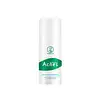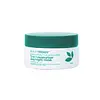What's inside
What's inside
 Key Ingredients
Key Ingredients

 Benefits
Benefits

 Concerns
Concerns

 Ingredients Side-by-side
Ingredients Side-by-side

Water
Skin ConditioningHydrogenated Polyisobutene
EmollientDicaprylyl Carbonate
EmollientButylene Glycol
HumectantPolysorbate 60
EmulsifyingDimethicone
EmollientAmmonium Acryloyldimethyltaurate/Vp Copolymer
Silica
AbrasiveGlyceryl Stearate Citrate
EmollientGlyceryl Acrylate/Acrylic Acid Copolymer
HumectantDimethiconol
EmollientGlycerin
HumectantMethylparaben
PreservativeSorbitol
HumectantO-Cymen-5-Ol
AntimicrobialBetaine
HumectantDisodium EDTA
Propylene Glycol
HumectantChondrus Crispus Extract
Skin ConditioningButyl Avocadate
Skin ConditioningArginine
MaskingParfum
MaskingPropylparaben
PreservativeAlcohol
AntimicrobialPvm/Ma Copolymer
Emulsion StabilisingPhenoxyethanol
PreservativeCentella Asiatica Extract
CleansingAloe Barbadensis Leaf Juice
Skin ConditioningLecithin
EmollientPrunus Cerasus Extract
AntioxidantPyrus Malus Juice
Skin ConditioningChlorphenesin
AntimicrobialOpuntia Streptacantha Stem Extract
HumectantSalicylic Acid
MaskingBeta-Glucan
Skin ConditioningCitric Acid
BufferingAmylopectin
Satureja Hortensis Extract
MaskingDextrin
AbsorbentSodium Benzoate
MaskingPotassium Sorbate
PreservativeXanthan Gum
EmulsifyingSodium Dehydroacetate
PreservativeChamomilla Recutita Flower Extract
MaskingAsiaticoside
AntioxidantMadecassic Acid
Skin ConditioningAsiatic Acid
Skin ConditioningEthylhexylglycerin
Skin ConditioningWater, Hydrogenated Polyisobutene, Dicaprylyl Carbonate, Butylene Glycol, Polysorbate 60, Dimethicone, Ammonium Acryloyldimethyltaurate/Vp Copolymer, Silica, Glyceryl Stearate Citrate, Glyceryl Acrylate/Acrylic Acid Copolymer, Dimethiconol, Glycerin, Methylparaben, Sorbitol, O-Cymen-5-Ol, Betaine, Disodium EDTA, Propylene Glycol, Chondrus Crispus Extract, Butyl Avocadate, Arginine, Parfum, Propylparaben, Alcohol, Pvm/Ma Copolymer, Phenoxyethanol, Centella Asiatica Extract, Aloe Barbadensis Leaf Juice, Lecithin, Prunus Cerasus Extract, Pyrus Malus Juice, Chlorphenesin, Opuntia Streptacantha Stem Extract, Salicylic Acid, Beta-Glucan, Citric Acid, Amylopectin, Satureja Hortensis Extract, Dextrin, Sodium Benzoate, Potassium Sorbate, Xanthan Gum, Sodium Dehydroacetate, Chamomilla Recutita Flower Extract, Asiaticoside, Madecassic Acid, Asiatic Acid, Ethylhexylglycerin
Water
Skin ConditioningSodium Acrylates/Beheneth-25 Methacrylate Crosspolymer
Skin ConditioningHydrogenated Polydecene
EmollientLauryl Glucoside
CleansingButylene Glycol
HumectantIsostearyl Hydroxystearate
EmollientIsohexadecane
EmollientCyclopentasiloxane
EmollientDimethicone
EmollientTitanium Dioxide
Cosmetic ColorantTalc
AbrasiveLauryl PEG-9 Polydimethylsiloxyethyl Dimethicone
Skin ConditioningTriethoxycaprylylsilane
PPG-20 Methyl Glucose Ether
Skin ConditioningNeopentyl Glycol Diethylhexanoate
EmollientNelumbo Nucifera Leaf Extract
Skin ConditioningCamellia Sinensis Leaf Extract
AntimicrobialPsidium Guajava Leaf Extract
AstringentAngelica Gigas Extract
Skin ConditioningPhenoxyethanol
PreservativeDiisostearyl Malate
EmollientDisodium EDTA
Parfum
MaskingWater, Sodium Acrylates/Beheneth-25 Methacrylate Crosspolymer, Hydrogenated Polydecene, Lauryl Glucoside, Butylene Glycol, Isostearyl Hydroxystearate, Isohexadecane, Cyclopentasiloxane, Dimethicone, Titanium Dioxide, Talc, Lauryl PEG-9 Polydimethylsiloxyethyl Dimethicone, Triethoxycaprylylsilane, PPG-20 Methyl Glucose Ether, Neopentyl Glycol Diethylhexanoate, Nelumbo Nucifera Leaf Extract, Camellia Sinensis Leaf Extract, Psidium Guajava Leaf Extract, Angelica Gigas Extract, Phenoxyethanol, Diisostearyl Malate, Disodium EDTA, Parfum
Ingredients Explained
These ingredients are found in both products.
Ingredients higher up in an ingredient list are typically present in a larger amount.
Butylene Glycol (or BG) is used within cosmetic products for a few different reasons:
Overall, Butylene Glycol is a safe and well-rounded ingredient that works well with other ingredients.
Though this ingredient works well with most skin types, some people with sensitive skin may experience a reaction such as allergic rashes, closed comedones, or itchiness.
Learn more about Butylene GlycolDimethicone is a type of synthetic silicone created from natural materials such as quartz.
What it does:
Dimethicone comes in different viscosities:
Depending on the viscosity, dimethicone has different properties.
Ingredients lists don't always show which type is used, so we recommend reaching out to the brand if you have questions about the viscosity.
This ingredient is unlikely to cause irritation because it does not get absorbed into skin. However, people with silicone allergies should be careful about using this ingredient.
Note: Dimethicone may contribute to pilling. This is because it is not oil or water soluble, so pilling may occur when layered with products. When mixed with heavy oils in a formula, the outcome is also quite greasy.
Learn more about DimethiconeDisodium EDTA plays a role in making products more stable by aiding other preservatives.
It is a chelating agent, meaning it neutralizes metal ions that may be found in a product.
Disodium EDTA is a salt of edetic acid and is found to be safe in cosmetic ingredients.
Learn more about Disodium EDTAParfum is a catch-all term for an ingredient or more that is used to give a scent to products.
Also called "fragrance", this ingredient can be a blend of hundreds of chemicals or plant oils. This means every product with "fragrance" or "parfum" in the ingredients list is a different mixture.
For instance, Habanolide is a proprietary trade name for a specific aroma chemical. When used as a fragrance ingredient in cosmetics, most aroma chemicals fall under the broad labeling category of “FRAGRANCE” or “PARFUM” according to EU and US regulations.
The term 'parfum' or 'fragrance' is not regulated in many countries. In many cases, it is up to the brand to define this term.
For instance, many brands choose to label themselves as "fragrance-free" because they are not using synthetic fragrances. However, their products may still contain ingredients such as essential oils that are considered a fragrance by INCI standards.
One example is Calendula flower extract. Calendula is an essential oil that still imparts a scent or 'fragrance'.
Depending on the blend, the ingredients in the mixture can cause allergies and sensitivities on the skin. Some ingredients that are known EU allergens include linalool and citronellol.
Parfum can also be used to mask or cover an unpleasant scent.
The bottom line is: not all fragrances/parfum/ingredients are created equally. If you are worried about fragrances, we recommend taking a closer look at an ingredient. And of course, we always recommend speaking with a professional.
Learn more about ParfumPhenoxyethanol is a preservative that has germicide, antimicrobial, and aromatic properties. Studies show that phenoxyethanol can prevent microbial growth. By itself, it has a scent that is similar to that of a rose.
It's often used in formulations along with Caprylyl Glycol to preserve the shelf life of products.
Water. It's the most common cosmetic ingredient of all. You'll usually see it at the top of ingredient lists, meaning that it makes up the largest part of the product.
So why is it so popular? Water most often acts as a solvent - this means that it helps dissolve other ingredients into the formulation.
You'll also recognize water as that liquid we all need to stay alive. If you see this, drink a glass of water. Stay hydrated!
Learn more about Water